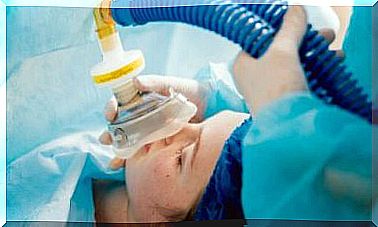Open-angle Glaucoma: Everything You Need To Know

Open-angle glaucoma is an eye disease that can lead to blindness. Causes damage to the optic nerve that causes visual field loss. It is often associated with increased pressure in the eye, but it can also occur with normal pressure.
There is open-angle glaucoma and closed-angle glaucoma, but the most common is the former. It is estimated that it corresponds to 90% of all cases. Depending on the region, it can be the second or fourth cause of blindness in the world.
Open-angle glaucoma is also called primary or chronic glaucoma . Occurs slowly and throughout life. For a long time it evolves without showing symptoms, and often goes unnoticed.
Possible Causes of Open Angle Glaucoma
Open-angle glaucoma, in most cases, occurs when the eye’s drainage channels become blocked. This leads to increased intraocular pressure and damage to the optic nerve.
The eye’s drainage system forms an angle from the iris to the cornea. From there it is connected to the outside by conductors. In people with this type of glaucoma, the angle is open, but there is no adequate drainage.
The reasons for poor drainage have to do with clogged or very narrow ducts. As the fluid is not drained, the pressure in the eye increases and this damages the optic nerve. Therefore, the ability to see is diminished.
Some people have an optic nerve that is more susceptible to eye pressure . Those of African origin are at greater risk of developing this disease, as are those over 60 years of age, especially of Latino origin, and those with a family history or suffering from diabetes.

Main symptoms
Open-angle glaucoma develops very slowly and silently. In most cases, people notice that something is wrong when there is loss of vision. By then, the optic nerve is already severely damaged.
Initial loss occurs in peripheral or lateral vision. However, sharpness and visual acuity are preserved until the disease is very advanced. The most common is that it is only detected in routine exams.
Open Angle Glaucoma Diagnosis
Ideally, open-angle glaucoma should be detected early, before optic nerve damage progresses. This is done with regular eye exams. Those who belong to risk groups must undergo periodic check-ups.
It is most advisable to increase the frequency according to age, as follows:
- Before age 40: a check-up every two to four years.
- From 40 to 54 years: once a year or once every three years.
- From 55 to 64 years old: once a year or once every two years.
- Over 65 years: once every six months or once a year.
Various tests can be done to determine if open-angle glaucoma is present. The most common are as follows:
- Tonometry: is a test to measure the internal pressure of the eye.
- Ophthalmoscopy: The optic nerve is examined to establish possible damage.
- Perimetry: visual field test. Allows you to determine if and to what extent vision has been affected by open-angle glaucoma.
- Gonioscopy: Establishes whether the angle between the iris and the cornea is open and wide or narrow and closed.
- Pachymetry: measures the thickness of the cornea.
Sometimes all of these tests are done, and sometimes just a few of them. Open-angle glaucoma is not always easy to diagnose.
What treatment options are there?
Open-angle glaucoma treatment aims to reduce the pressure inside the eye. If the optic nerve is damaged, there is no way to get it back. Hence the importance of early diagnosis and management.
In general, there are 3 therapeutic routes:
- Medicines: almost always include eye drops. These medications cause the eye to produce less fluid or increase its outflow.
- Laser surgery: This type of surgery helps the eyes drain fluid better or decreases the amount the eyes produce. It is an outpatient operation and is usually effective in reducing eye pressure.
- Conventional surgery: In this case, the fluid is redirected to avoid the drainage system that doesn’t work. New drainage routes can also be created.

Open-angle glaucoma is not always treated in the same way.
The treatment to be chosen depends on the state of the optic nerve and the health conditions of each patient. The doctor will indicate the benefits of each alternative and will indicate the most suitable, according to the particularities.
In many cases, patients with conventional or laser surgery may need medication after the operation. The positive effects of the intervention may also disappear after some time.









